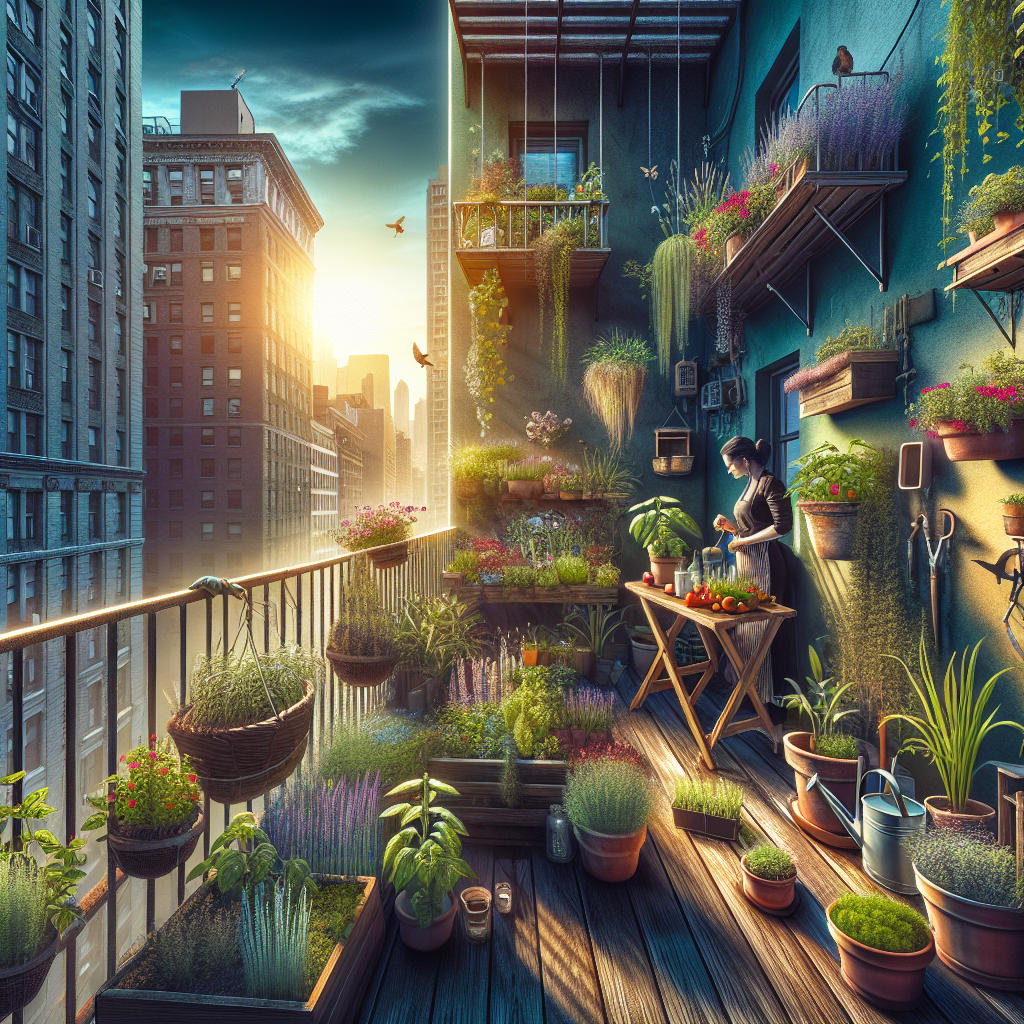Title: The Basics Of Balcony Gardening: Maximizing Small Spaces
Introduction:
Balcony gardening is a delightful way to bring nature to your high-rise urban space. It can be a haven for anyone looking to cultivate plants, freshen up their outdoor décor, or grow their own herbs and vegetables. Despite the limited space, a well-planned balcony garden can be lush, productive, and highly rewarding. In this guide, we’ll walk through the basics of balcony gardening, showing you how to make the most of your small space while adhering to some of the best SEO strategies and practices.
Understanding Your Space:
Before you start, assess the space available on your balcony. Note the amount of sunlight it receives, the direction it faces, and the prevailing winds. All these factors will influence the types of plants you can grow, as well as the layout of your garden.
Choose the Right Plants:
Sunlight is a key factor in plant growth. For balconies that receive full sun, consider sun-loving plants such as tomatoes, peppers, and marigolds. For shaded balconies, opt for shade-tolerant species like ferns, begonias, and hostas. The Farmer’s Almanac provides a comprehensive guide on plants suitable for different light conditions.
Containers and Pots:
The right container can make a big difference in balcony gardening. Ensure that they have adequate drainage to prevent waterlogging. Fabric pots are a great choice for promoting root health, allowing air to reach the soil and preventing overheating. Check out these fabric pots available on Amazon for a suitable and easy-to-use option.
Soil and Fertilization:
Invest in high-quality potting soil designed for container gardens. It should be well-draining yet retain enough moisture to nurture your plants. Regular fertilization is also crucial, as container plants cannot reach for nutrients beyond their confined space. Opt for a balanced, slow-release fertilizer to keep your plants healthy throughout the growing season.
Watering Wisely:
Over-watering can be as harmful as under-watering. Ensure that you hydrate your plants according to their specific needs. Some, like succulents, require minimal water, while others might need daily watering. Consider a self-watering system if you’re worried about keeping a consistent schedule.
Plant Placement:
To maximize your growing area, consider vertical gardening. Use wall planters, trellises, and hanging baskets to expand your garden upwards. This technique not only saves floor space but can also create a beautiful green wall as a backdrop to your outdoor sanctuary.
Privacy and Wind Protection:
High-rise balconies can be windy, which can damage plants or dry them out faster. Incorporate windbreaks by using sturdy plants, lattice screens, or decorative walls. Better Homes & Gardens offers insights on suitable plants that double as privacy screens.
Seasonal Considerations:
Seasonal changes will affect your balcony garden. Shift plants around as needed to adjust for the variances in sunlight and temperature throughout the year. Additionally, have a plan for winter if you live in a colder climate—some plants may need to be brought indoors or protected with coverings.
Maintenance and Pest Control:
Regular maintenance is key to a thriving balcony garden. Prune dead or yellowing leaves, check for signs of pests, and deadhead flowers to encourage new growth. For natural pest control, consider introducing beneficial insects like ladybugs or using neem oil, a natural pesticide that is effective against many common pests.
Conclusion:
Balcony gardening is an art that combines patience, planning, and creativity. By understanding your environment, selecting the appropriate plants, and employing clever space-saving techniques, you can transform your small balcony into a lush, green retreat. Remember that gardening is an ongoing learning process—don’t be afraid to experiment and adjust as you go.
Balcony gardening is not only a form of relaxation but also a practice in sustainability and self-sufficiency. With the basics covered in this blog, you’re well on your way to cultivating a mini oasis amidst the urban jungle. So roll up your sleeves, get your gardening gloves on, and let your balcony garden journey begin!
(Resource Links:
– Farmer’s Almanac
– Fabric Pots on Amazon
– Better Homes & Gardens)

